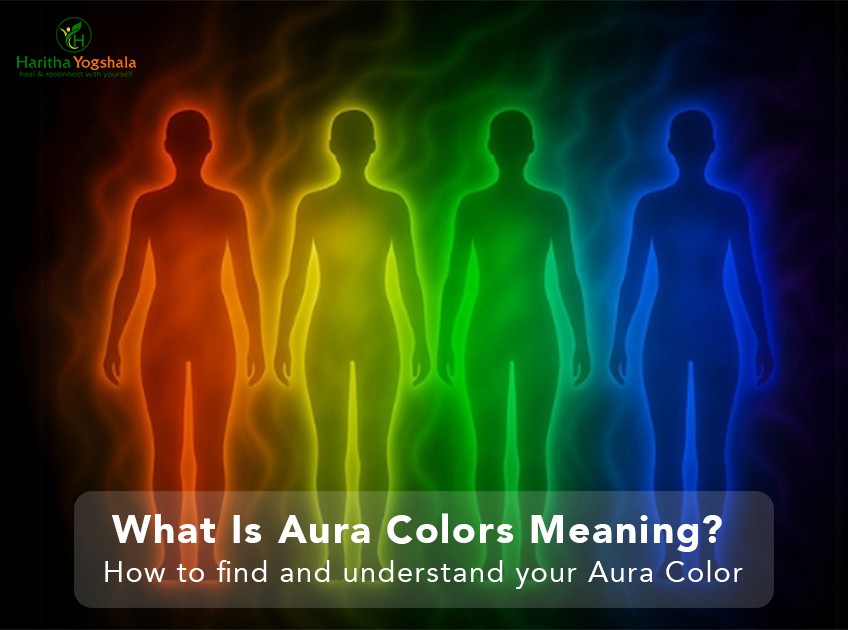
Have you ever met someone and instantly liked or disliked them? Or walked into a room and instantly knew if you felt happy, sad, or tense? You might be sensing a change in the aura—an invisible energy field that surrounds all living things. Auras can appear in different colors, and these colors can show what’s happening with your emotions, thoughts, or spiritual energy.
From ancient Vedas to today’s spiritual practices, many traditions have known about these energy fields. Now, we’re bringing together this old wisdom and modern science to help you discover what your aura says about you.
In this guide, we’ll explore the different aura colors, what they mean, and simple ways to see your own aura. Whether you're deeply into spirituality or just curious about energy, learning about aura colors can help you understand your personality and the challenges you’re facing in life.
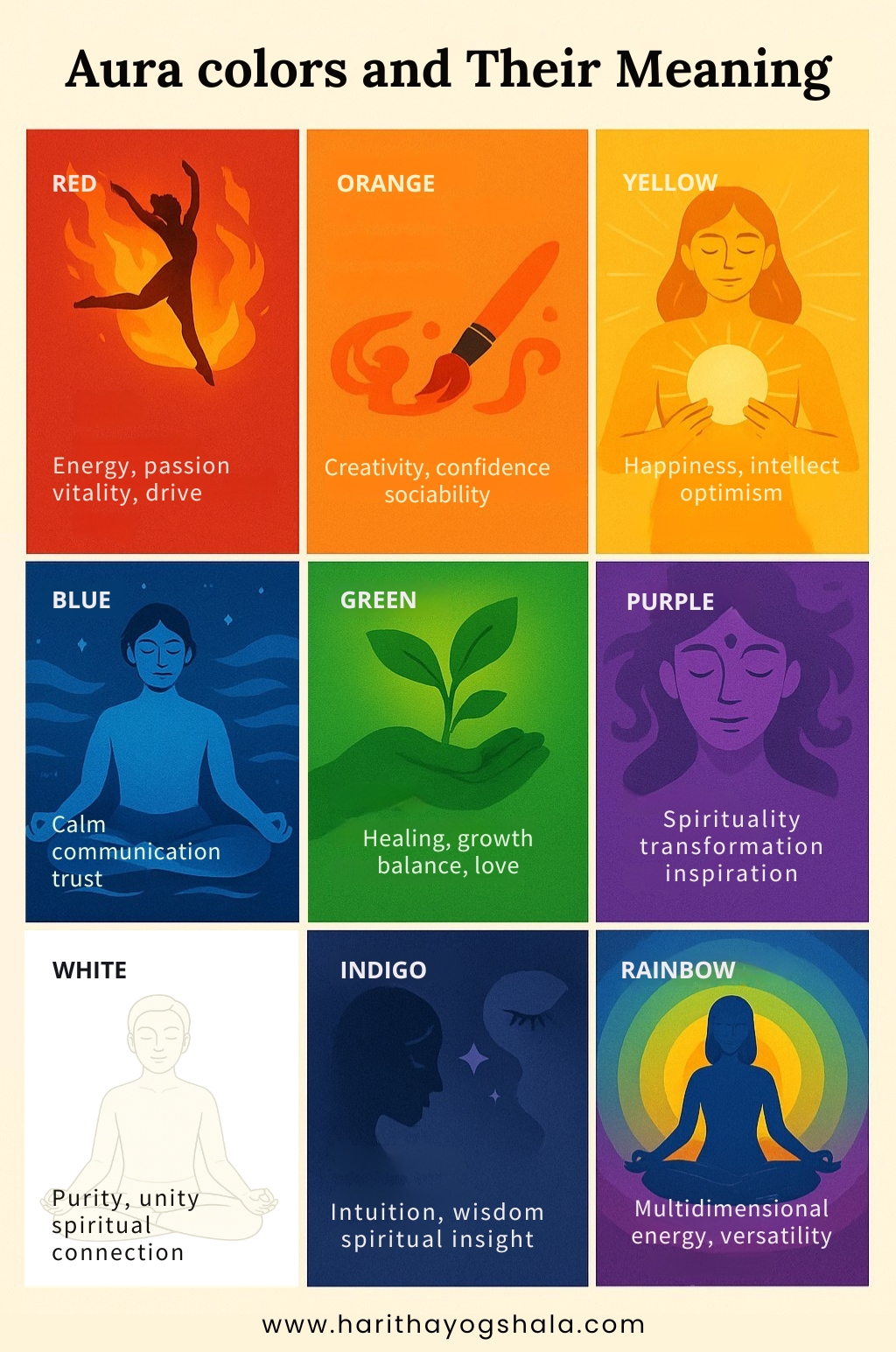
An aura is an invisible energy field that surrounds all living things—people, animals, and even plants. It spreads out from the body in a glowing, oval shape that some spiritual practitioners can see. Most people can’t see auras without special training, but they can often feel them.
Auras are not just a spiritual idea. Science shows that all living things give off energy through things like body cells, brain signals, and heartbeats. These energy signals combine to create the aura. It constantly changes and reflects your physical health, emotions, thoughts, and spiritual state.
People from many cultures and times have talked about seeing auras. Ancient Egyptian art shows halos around important people. In Hinduism, the Vedas talk about "prana," or life energy, which is closely related to auras. Buddhist paintings often show spiritual teachers with a glowing light around them. In Christianity, saints are shown with golden halos to represent their divine energy.
All these traditions are talking about the same thing—the human energy field. This field reflects how we feel inside and connects us to the world around us.
|
Aura Color |
Symbolism & Meaning |
Associated Chakra |
Positive Traits |
Negative Traits |
|---|---|---|---|---|
|
Red |
Energy, passion, vitality, drive |
Root Chakra |
Leadership, determination, courage |
Anger, impulsiveness, material obsession |
|
Orange |
Creativity, confidence, sociability |
Sacral Chakra |
Optimism, ambition, warmth |
Impulsiveness, distraction |
|
Yellow |
Happiness, intellect, optimism |
Solar Plexus Chakra |
Charisma, mental clarity, creativity |
Anxiety, overthinking, stress |
|
Green |
Healing, growth, balance, love |
Heart Chakra |
Compassion, nurturing, harmony |
Emotional vulnerability, jealousy |
|
Blue |
Calm, communication, trust |
Throat Chakra |
Intuition, empathy, peace |
Sadness, emotional withdrawal |
|
Indigo |
Intuition, wisdom, spiritual insight |
Third Eye Chakra |
Deep perception, empathy, psychic ability |
Sensitivity, escapism |
|
Purple/Violet |
Spirituality, transformation, inspiration |
Crown Chakra |
Creativity, leadership, spiritual awareness |
Overwhelm, escapism |
|
White |
Purity, unity, spiritual connection |
Crown Chakra |
Clarity, enlightenment, peace |
Detachment, aloofness |
|
Black |
Protection, concealment, negativity |
None |
Protective, mysterious |
Depression, anger, blocked energy |
|
Rainbow |
Multidimensional energy, versatility |
All Chakras |
Dynamic, adaptable, balanced |
Scattered focus |
While traditional science has been slow to accept the idea of auras, new research in fields like quantum physics and bioenergetics is starting to connect science with spiritual ideas.
Studies now show that our body’s energy changes during meditation and mindfulness. In one important experiment at a health expo, scientists used special tools to measure these energy shifts in real-time.
Initial energy measurement: 0 units
After 5 minutes of meditation: 700 units
Peak measurement at 40 minutes: 1800 units
The research showed fascinating transitions in energy patterns:
Initial state: Red band (indicating stress or agitation)
During meditation: Green channel (associated with heart center and unconditional love)
Post-meditation: Significantly improved auric field strength and size
These findings suggest that our energy fields respond to our mental and emotional states—a concept long held in spiritual traditions.
There are now devices that let us capture auras using unique equipment. Born in 1939, when Soviet scientists Semyon and Valentina Kirlian invented it, Kirlian photography captures the electricity present on various substances. You can see these photos show the energy fields that surround living things.
These days, some aura cameras have hand sensors that detect the body’s electrical energy and help display those readings as colourful pictures. Although there is some disbelief, many spiritual workers believe these methods help them sense energy that is usually difficult to notice.
Understanding aura color meanings is essential for explaining what your energy field reveals about you. Each color carries specific vibrations and associations with personality traits, emotional states, and spiritual development.
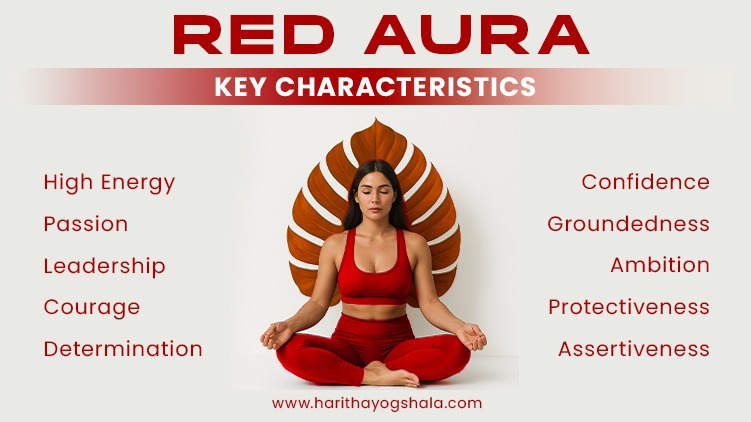
Red aura color typically indicates a strong life force, passion, and grounding in the physical world.
Red auras are associated with the root chakra, which governs our connection to the physical world and our sense of security. People with predominantly red auras often exhibit:
Strong-willed and determined
Passionate and energetic
Action-oriented and practical
Natural leaders with courage and confidence
Tendency toward impatience
Potential for anger or aggression when frustrated
May struggle with impulsivity
Can become overly competitive
A healthy Red aura indicates vitality and passion for life, while a muddy or dark red might suggest anger issues or unresolved frustrations.
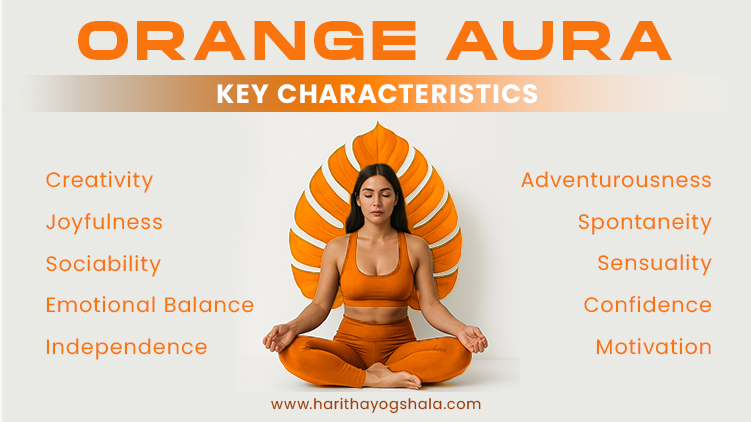
Orange aura color the physical energy of red with the emotional aspects of yellow, creating a vibrant, creative force. This color connects to the sacral chakra, governing creativity and emotional well-being.
Highly creative and artistic
Socially engaging and charismatic
Adventurous and spontaneous
Emotionally expressive
May experience emotional ups and downs
Could struggle with commitment
Sometimes scattered energy
Potential for seeking thrills without considering consequences
A bright, clear orange suggests healthy creativity and emotional expression, while a cloudy orange might indicate emotional blocks or creative stagnation.
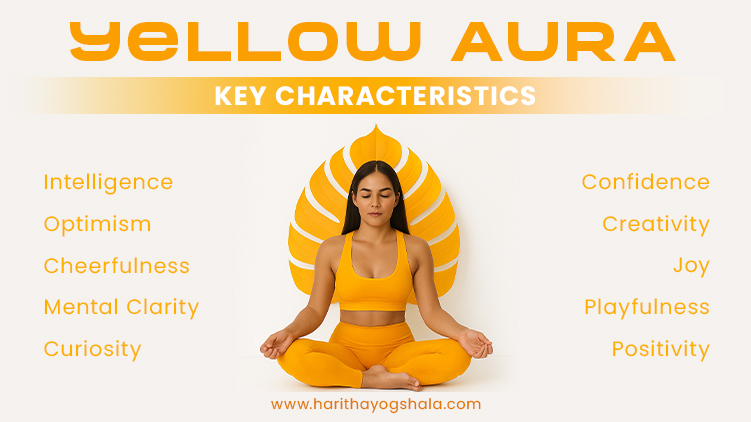
Yellow aura color radiate intellectual energy and optimism. Connected to the solar plexus chakra, yellow energy relates to personal power, confidence, and mental clarity.
Intellectually sharp and analytical
Naturally optimistic and cheerful
Self-confident and independent
Excellent communicators and teachers
May overthink situations
Can be critical of self and others
Potential for anxiety when under pressure
Sometimes struggle with perfectionism
A clear, bright yellow indicates mental clarity and optimism, while a dull or muddy yellow might suggest intellectual burnout or anxiety.
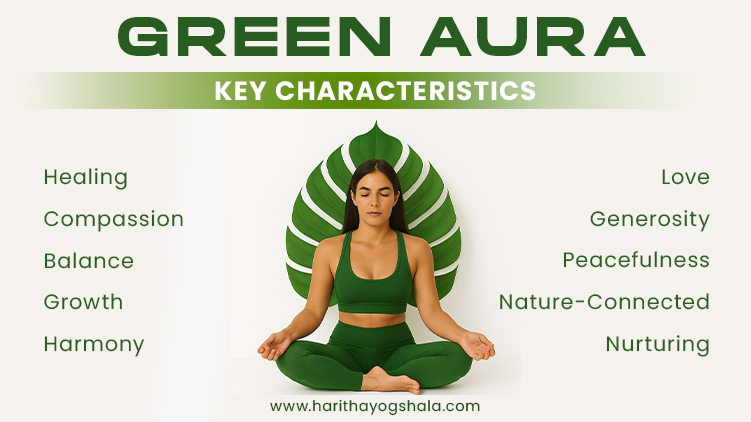
Green aura color represent healing, growth, and balance. Associated with the heart chakra, green energy reflects love, compassion, and connection to nature.
Naturally healing and nurturing
Balanced and harmonious
Strong connection to nature and animals
Compassionate and service-oriented
May take on others’ problems
Could struggle with setting boundaries
Sometimes experience emotional overwhelm
Tendency to neglect self-care while caring for others
A vibrant green suggests a powerful healing ability and an open heart, while a murky green might indicate jealousy, resentment, or feeling stuck.
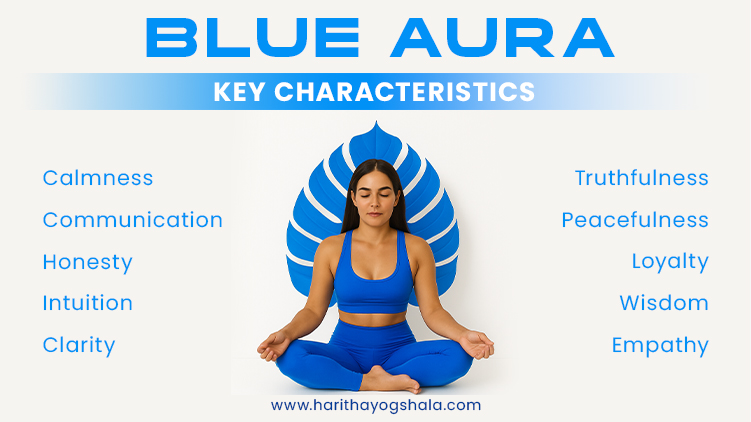
Blue aura color signify communication, truth, and calm. Connected to the throat chakra, blue energy relates to self-expression, peace, and intuitive wisdom.
Excellent communicators
Naturally peaceful and calming
Trustworthy and loyal
Intuitive and thoughtful
May struggle with speaking up
Could become isolated in pursuit of peace
Sometimes overly sensitive to discord
Potential for suppressing emotions to maintain harmony
A clear, bright blue indicates healthy self-expression and inner peace, while a cloudy blue might suggest difficulty communicating or unexpressed truths.
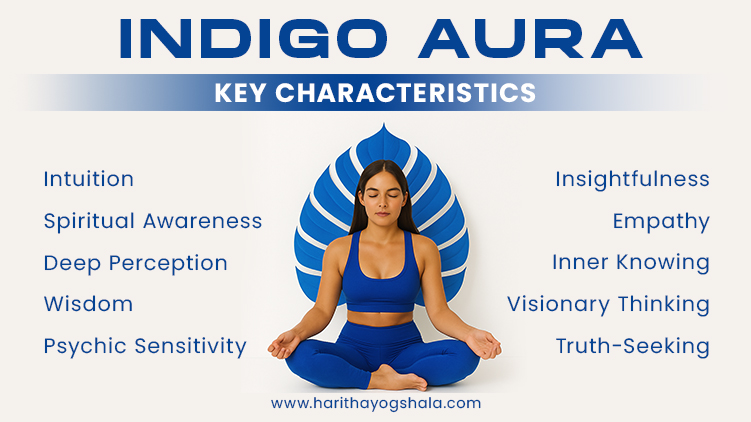
Indigo aura color represent intuition, deep insight, and spiritual awareness. Associated with the third eye chakra, indigo energy connects to psychic abilities and inner wisdom.
Highly intuitive and insightful
Deep thinkers and visionaries
Natural psychic abilities
Independent and self-reliant
May feel misunderstood by others
Could struggle with practical matters
Sometimes, disconnect from physical reality
Potential for isolation due to the unique perspective
A clear indigo suggests developed intuition and spiritual awareness, while a muddy indigo might indicate confusion or blocked intuitive abilities.
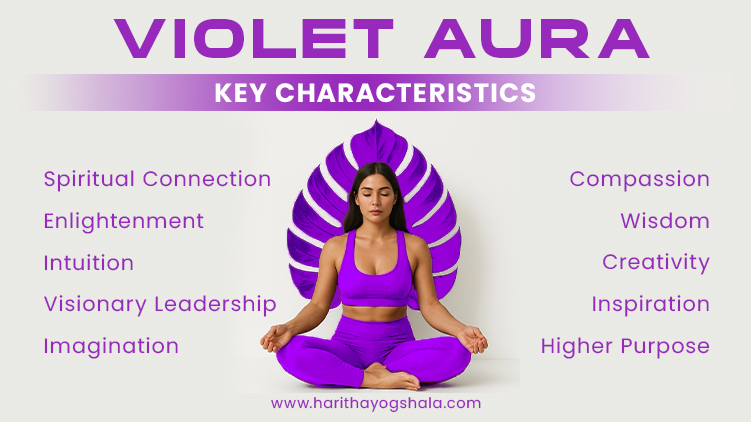
Violet or Purple aura color signify spiritual connection, wisdom, and transformation. Linked to the crown chakra, violet energy represents higher consciousness and divine connection.
Spiritually aware and connected
Visionary and imaginative
Charismatic and inspiring to others
Natural healers and teachers
May struggle with grounding
Could feel disconnected from everyday reality
Sometimes impatient with those less spiritually aware
Potential for escapism
A bright, clear violet suggests spiritual enlightenment and wisdom, while a dull violet might indicate spiritual confusion or disconnection.

White aura color represent spiritual purity, transcendence, and divine energy. Often seen around spiritual masters or during moments of profound spiritual experience, white energy indicates the highest vibration.
Highly spiritually evolved
Pure intentions and thoughts
Connected to divine guidance
Protective and healing presence
May find it difficult to relate to material concerns
Could struggle with the practical aspects of life
Sometimes perceived as detached or aloof
Potential for being overly idealistic
A clear, bright white suggests spiritual mastery and purity, while a dull or grayish white might indicate spiritual fatigue or disconnection.
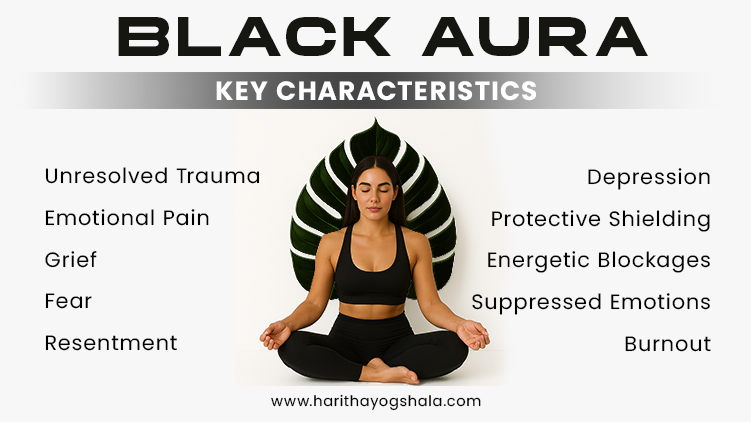
Black aura color represents mystery, protection, and transformation. Often seen around individuals going through intense inner changes or guarding their energy, black energy indicates deep boundaries and a complex inner world.
Strong, resilient, and protective
Highly intuitive and aware of hidden truths
Capable of profound transformation and self-reflection
May possess a mysterious or enigmatic presence
Skilled at shielding themselves from negative influences
Can indicate emotional blockages or unresolved trauma
Might struggle with letting go of past pain or negativity
Sometimes perceived as intimidating or unapproachable
Potential tendency toward isolation or withdrawal
Risk of holding onto grudges or negative energy
A deep, solid black suggests strong protection and transformative power, while a dull or murky black may indicate emotional heaviness or spiritual stagnation.
Some individuals display multiple colors or even a rainbow auras. This typically indicates:
A well-balanced personality with many strengths
Someone in transition or personal transformation
Healers who adapt to others’ energy needs
Highly evolved spiritual beings
The relationship between aura colors and chakras helps explain how energy flows through different aspects of your being. When all chakras are balanced, the aura may display a harmonious rainbow effect.
Aura interpretation requires practice and patience, but anyone can develop this intuitive skill with consistent effort. Here are several methods to help you perceive your own aura or others’:
Before attempting to see auras, create optimal conditions:
Environment: Choose a quiet space with soft, natural lighting. Avoid harsh fluorescent lights.
Mental State: Clear your mind through brief meditation or deep breathing.
Physical Comfort: Ensure you’re comfortable but alert, not drowsy.
Patience: Approach with curiosity rather than expectation. Results may take time.
This technique allows you to observe your aura:
Position yourself against a plain white or light-colored background
Stand about 18 inches away from a mirror in soft, indirect lighting
Focus on your forehead’s center (third eye area)
Allow your gaze to soften and slightly blur
Without straining, notice any colors, light, or shimmer around your head and shoulders
Practice for only 1-2 minutes initially to avoid eye strain
Learning how to interpret your aura color begins with understanding the basic meanings of each shade in the spectrum. With practice, you’ll notice more details and nuances.
This method is excellent for beginners:
Hold your hands about 6 inches apart, palms facing each other
Set against a white or neutral background
Relax your eyes and gaze softly between your hands
Notice any color, mist, or light between and around your fingers
Move your hands slightly closer and further apart to observe changes
If you’re curious but struggling with self-perception methods, consider professional aura photography:
Many metaphysical shops and spiritual centers offer aura photography services
These specialized cameras use hand sensors to measure your electromagnetic energy
The readings are translated into colors displayed around your image
A practitioner can help interpret the results
While not scientifically validated, many find these visual representations helpful starting points for exploration.
Your aura color personality traits can reveal both your strengths and areas for potential growth and healing. The colors, patterns, and clarity of your aura provide valuable insights into various aspects of your being:
The dominant colors in your aura often reflect your core personality traits:
Predominant Color: Indicates your general disposition and natural tendencies
Color Combinations: Suggest the complexity of your personality and various strengths
Color Location: Different areas of the aura relate to different aspects of self (e.g., colors near the head relate to thoughts)
For example, someone with primarily blue and purple might be intuitive, communicative, and spiritually oriented, while someone with red and yellow might be action-oriented, analytical, and confident.
Aura colors and emotional states are intimately connected, with your energy field reflecting your inner feelings. Your aura can reveal:
Current Emotional Climate: Temporary colors that appear based on your present feelings
Emotional Patterns: Recurring colors that indicate habitual emotional responses
Emotional Blocks: Cloudy or muddy areas that might suggest unresolved emotions
Understanding these patterns can help you recognize emotional triggers and develop greater emotional intelligence.
A deeper analysis of your aura can provide insights into your life path:
Spiritual Development: Colors like indigo, violet, and white suggest spiritual awareness
Life Purpose: Dominant colors often align with your natural gifts and calling
Growth Opportunities: Areas of weakness or imbalance in the aura indicate where personal development would be beneficial
Exploring aura colors and their meanings for personal growth can lead to profound self-discovery and transformation.
Understanding aura colors in daily life can help you make better decisions about your environment and relationships. Here are practical ways to apply this knowledge:
Knowing how to cleanse your aura color is essential for maintaining energetic health and balance in your daily life. Try these methods:
Salt Baths: Add sea salt or Himalayan salt to bathwater to draw out negative energy
Smudging: Use sage, palo santo, or other sacred herbs to clear your energy field
Sound Healing: Bells, singing bowls, or tuning forks can break up stagnant energy
Visualization: Imagine light or water washing through your aura, clearing away darkness
Nature Immersion: Spending time in natural settings naturally cleanses and recharges your energy
Incorporate these practices for ongoing aura maintenance:
Mindful Breathing: Regular deep breathing helps maintain aura clarity
Energy Boundaries: Visualize protective boundaries when entering crowded or negative spaces
Color Therapy: Surround yourself with colors that balance your energy needs
Intentional Movement: Practices like yoga, tai chi, or qigong help move energy through the aura
Emotional Processing: Regular emotional release prevents buildup in your energy field
Your aura interacts with others’ energy fields, affecting your relationships:
Compatibility: Complementary aura colors often indicate natural affinity
Energy Vampirism: Be aware of interactions that consistently drain your energy
Healing Presence: Those with green or blue auras often have naturally healing effects on others
Group Dynamics: Notice how your energy shifts in different social contexts
|
Chakra |
Note |
Frequency (Hz) |
Instrument/Mantra |
|
Root (Red) |
C |
256 Hz |
Drum, didgeridoo, "LAM" |
|
Sacral (Orange) |
D |
288 Hz |
Water sounds, "VAM" |
|
Solar Plexus (Yellow) |
E |
320 Hz |
Singing bowl, "RAM" |
|
Heart (Green) |
F |
341.3 Hz |
Harp, flute, "YAM" |
|
Throat (Blue) |
G |
384 Hz |
Crystal bowl, "HAM" |
|
Third Eye (Indigo) |
A |
426.7 Hz |
Tuning fork, "OM" |
|
Crown (Violet) |
B |
480 Hz |
Bell, chimes, silence |
Different spiritual traditions may have their own ideas about what aura colors mean, but some meanings are common. As you learn to feel energy better, you’ll find your own connection with your aura colors.
Remember, auras are always changing. They shift with your thoughts, feelings, health, and spiritual growth. Don’t focus on just one reading—use your aura colors to keep learning about yourself over time. By paying attention to your energy, you can connect with your inner guidance. This can help you understand life’s challenges, discover your true talents, and live in a way that feels right for you.
Whether you’re new to auras or have been working with them for a while, the world of energy is full of chances to heal, grow, and find balance. Trust yourself, practice often, and watch how the unseen energy becomes clear, showing the beautiful and complex you.
If you're new to yoga and want to start practicing yoga in an organized way to learn the correct techniques for yoga asanas, our Yoga for Beginners course is the ideal choice for you. Discover our 200 hour Yoga Teacher Training course, offered by one of The Best Yoga School in Rishikesh, perfect for those interested in increasing their practice and teaching abilities.
Explore the world of healing and meditation through our exceptional Sound Healing Course in Rishikesh. Designed for people who are passionate about learning and engaging with these activities that change lives